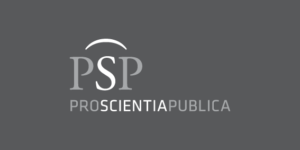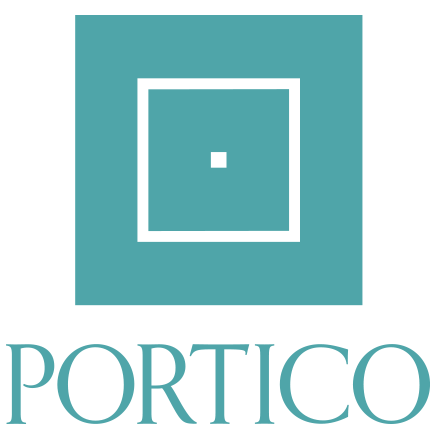Didactic Situation-Based Model for Using Student Traditional Handcraft Artefacts to Enhance Meaningful STEAM Education in Tanzania
DOI:
https://doi.org/10.15503/jecs2025.3.891.903Keywords:
STEAM education, mathematics education, Traditional Handcraft Artefact, cultureAbstract
Aim. The aim of the study was to propose a theoretical model for using students' traditional handicraft artefacts to enhance meaningful STEAM learning in Tanzania. This study was motivated by lessons we learned in our previous project in which we explored the potential of handicraft artefacts from Tanzania in facilitating STEAM learning and realised the need for the model to support teachers in using these materials in the classroom.
Methods. The proposed model is based on the reflection from the Theory of Didactic Situation (TDS) proposed by Brosseau in the 1970s.
Results. We have proposed the model with four phases and provided one illustration on how the model can be applied in the classroom. Our illustration from hypothetical lesson plan for Tanzania context shows various possibilities in which the model can enhance meaningful STEAM learning.
Conclusions. Despite the reported potential of the model, the use of hypothetical lesson plans makes the proposed model less reliable. Therefore, we will report the experience of applying the model classroom contexts of Tanzania in the next study. Furthermore, we call for research insights on applying the model in other relevant classroom contexts as a way to improve the model where necessary.
Downloads
References
Armstrong, L. (2019). STEAM Projects Observation, Experimentation, & Presentation. Mark Twain Media, Inc.
Ausubel, D. P. (2000). The Acquisition and Retention of Knowledge: A Cognitive View. Springer. https://doi.org/10.1007/978-94-015-9454-7
Babaci-Wilhite, Z. (Ed.). (2019). Promoting Language and STEAM as Human Rights in Edu-cation: Science, Technology, Engineering, Arts and Mathematics. Springer. https://doi.org/10.1007/978-981-13-2880-0
Bautista Jr, G. (2024). Flip Flop. GeoGebra. https://www.geogebra.org/m/jjmqpnre
Brejcha, L. (2018). Makerspaces in school: A month-by-month schoolwide model for build-ing meaningful makerspaces. Prufrock Press, Inc.
Brousseau, G., & Balacheff, N., Cooper, M., Sutherland, R., & Warfield, V. (Eds.). (2005). Theory of didactical situations in mathematics didactique des mathématiques, 1970-1990. Kluwer Academic Publishers.
Brown, B. A. (2021). Science in the city: Culturally relevant STEM education. Harvard Edu-cation Press.
Brown, B., Pérez, G., Ribay, K., Boda, P. A., & Wilsey, M. (2021). Teaching Culturally Rel-evant Science in Virtual Reality: “When a Problem Comes, You Can Solve It with Science”. Journal of Science Teacher Education, 32(1), 7–38. https://doi.org/10.1080/1046560X.2020.1778248
El Bedewy, S., Lavicza, Z., Haas, B., & Lieban, D. (2021). A STEAM practice approach to integrate architecture, culture and history to facilitate mathematical problem-solving. Education Sciences, 12(1).
Hatzopoulos, J. N., Stefanakis, D., Georgopoulos, A., Tapinaki, S., Pantelis, V., & Liritzis, I. (2017). Use Of Various Surveying Technologies To 3d Digital Mapping And Model-ling Of Cultural Heritage Structures For Maintenance And Restoration Purposes: The Tholos In Delphi, Greece. Mediterranean Archaeology & Archaeometry, 17(3), 311-336. http://www2.env.aegean.gr/labs/remote_sensing/EnglishBlock/publications/21_Hatzopoulos-Delphi4Delphi.pdf
Howland, J., Jonassen, D. & Marra, R. (2014). Meaningful learning with technology (Pear-son new int. ed). Pearson.
Liritzis, I. (2018). Stemac (Science, Technology, Engineering, Mathematics For Arts & Cul-ture): The Emergence Of A New Pedagogical Discipline. Scientific Culture, 4(2), 73-76.
Liritzis, I., Al-Otaibi, F. M., & Volonakis, P. (2015). Digital technologies and trends in cul-tural heritage. Mediterranean Archaeology and Archaeometry, 15(3), 313–313.
Mangiante-Orsola, C., Perrin-Glorian, M.-J., & Strømskag, H. (2018). Theory of didactical situations as a tool to understand and develop mathematics teaching practices. An-nales de Didactique et de Sciences Cognitives, Special issue, 145–174. https://doi.org/10.4000/adsc.334
Mayer, R. E. (2010). Applying the Science of Learning. Pearson.
Ministry of Education, Science and Technology. (2025). Education Sector Development Plan 2025/26–2029/30. The United Republic of Tanzania. https://www.moe.go.tz/sites/default/files/ESDP%202025-26%20hadi%202029-30%20Final-%2026%20February%202025.pdf
Ministry of Education, Science and Technology (2023a). Chemistry Syllabus for Advanced Secondary Education Form V-VI. Tanzania Institute of Education. https://www.tie.go.tz/uploads/documents/sw-1727192894-CHEMISTRY%20O'LEVEL%20EDUCATION%20FINAL.pdf
Ministry of Education, Science and Technology. (2023b). Physics Syllabus for Ordinary Secondary Education Form I-IV. Tanzania Institute of Education. https://www.tie.go.tz/uploads/documents/sw-1727257838-PHYS-ICS%20FOR%20ORDINARY%20SECONDARY%20EDUCATION%20FINAL.pdf
Ministry of Industry of Trade and Investment. (2016). Usaid East Africa Trade And Invest-ment Hub: National Agoa Strat-egy For The United Republic Of Tanzania. Develop-ment Alternatives Incorporated. https://agoa.info/images/documents/6213/tanzania-agoa-strategy-final.pdf
Saimon, M., Lavicza, Z., Houghton, T., Prodromou, T., Budinski, N., & Fenyvesi, K. (In Press). Exploring how traditional women's activities in Tanzania can attract female students to study STEAM subjects. Páginas de Educación.
Sweller, J., Ayres, P., & Kalyuga, S. (2011). Cognitive Load Theory. Springer. https://doi.org/10.1007/978-1-4419-8126-4
Trilling, B., & Fadel, C. (2009). 21st century skills: Learning for life in our times. John Wiley & Sons.
Downloads
Published
Issue
Section
License
Copyright (c) 2025 Musa Saimon, Thierry (Noah) Dana-Picard, Fatma Ally, Zsolt Lavicza, Guillermo Bautista

This work is licensed under a Creative Commons Attribution 4.0 International License.
CC-BY
Authors retain copyright and grant the journal right of first publication with the work simultaneously licensed under a Creative Commons Attribution License that allows others to share the work with an acknowledgement of the work's authorship and initial publication in this journal. All authors agree for publishing their email adresses, affiliations and short bio statements with their articles during the submission process.


